The Wilma
Introduction
Text-to-speech Audio
Images
A picture of Billy A. Simons, who commissioned the Wilma in 1921 as a living memorial to his wife, Edna Wilma, who was a light opera performer.

A portrait of Edna Wilma Simons painted in 1919. Edna Wilma preformed and lived in the Wilma up until her death in 1954. After the death of her first husband Billy A. Simons in 1937, she managed the Wilma theatre.
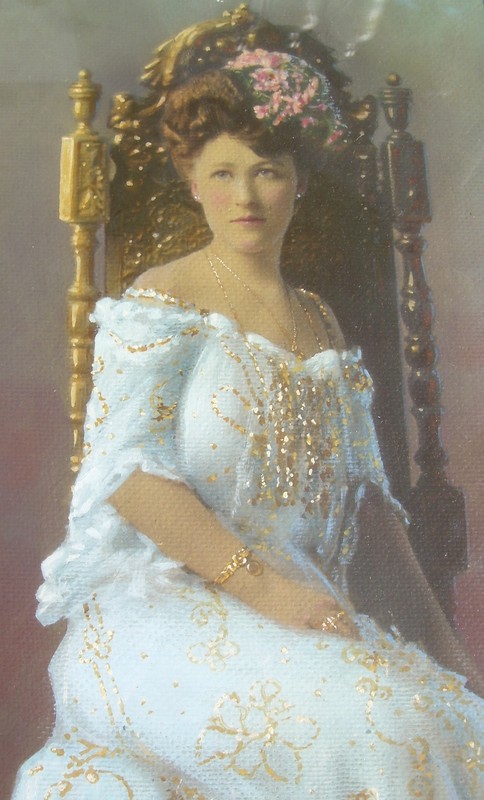
This is a picture of H. E. Kirkemo, one of the architects who designed the Wilma. He and his wife, Lillian, lived in an apartment in the Wilma during their first year of marriage. (Photo undated)
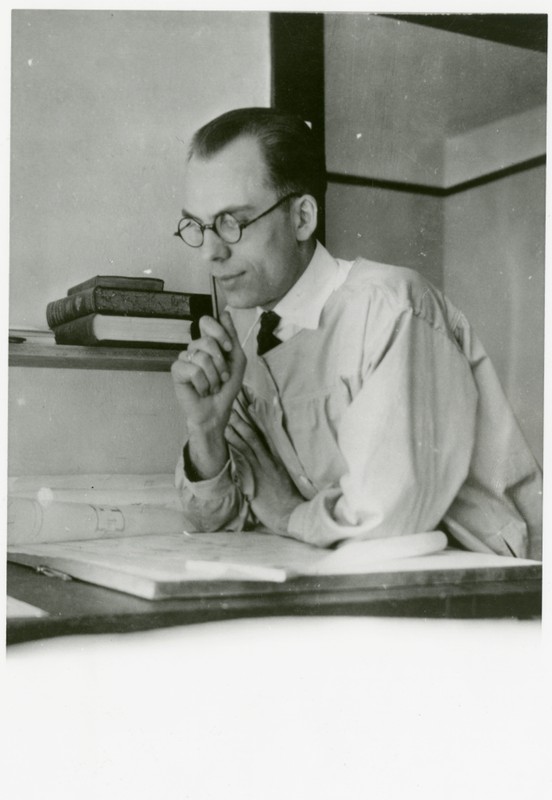
Another picture of H. E. Kirkemo. (Photo undated)
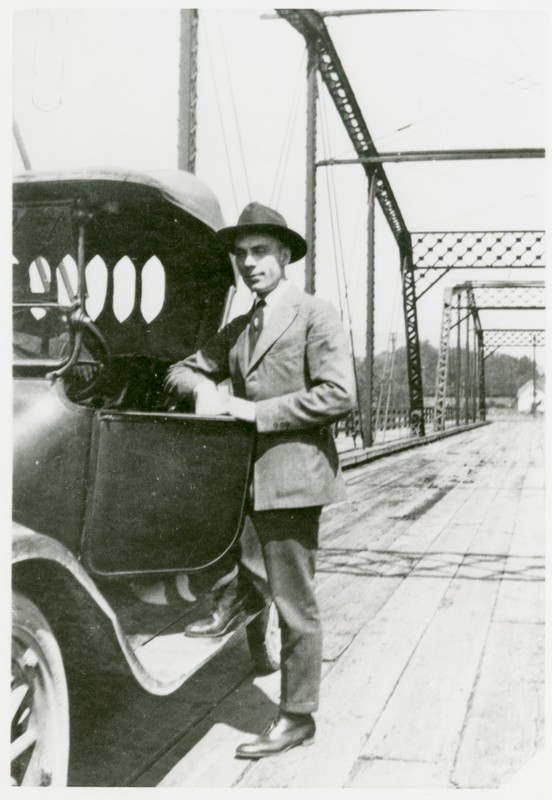
This is an original architectural drawing of the Wilma by Ole Bakke. It illustrates the side of the Wilma building facing the river.

The picture showcases the construction of the Wilma building in 1920. The Wilma was designed by architects Ole Bakke and H. E. Kirkemo.
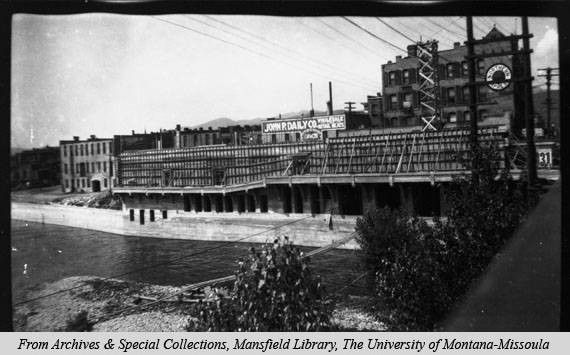
This picture showcases the construction of the Wilma Theatre stage in 1920.

This 1921 Sanborn Fire Insurance Map shows the Wilma Theatre was part of/within the Smead-Simons Building, which was right next to the river. It was also part of a series of other businesses and hotels along and just off Higgins. The map shows a few features of the building as well. The lobby and restaurant are labeled on the map, as is the stage, and the swimming pool in the basement. It states it was built in 1920 and that there is fireproof construction everywhere except the auditorium ceiling. A side note outside the building reveals there is an ornamental front with characteristics that extend around the building, and that the wall facing the river is full of windows.
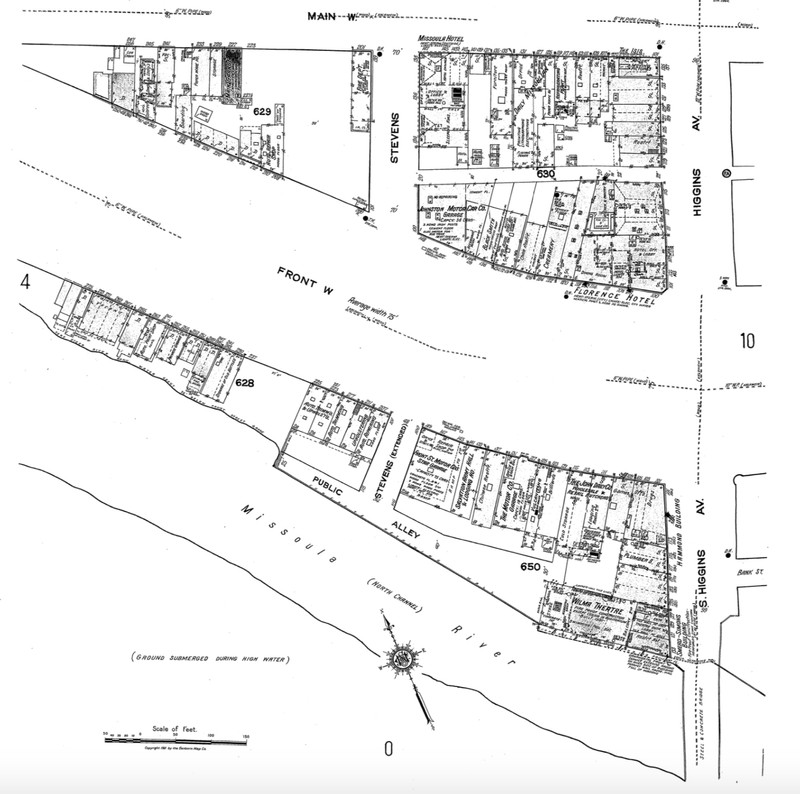
This is an original program from the Wilma Theatre from September 29th, 1933.

This is the inside of the program. It included advertisements for the mercantile and other businesses in Missoula, as well as dedications and the list of shows.

To contrast with the program from 1933, here is a program from 1981 celebrating the 60th anniversary of the Wilma. Inside the program is a reminiscence.

The inside of the program from 1981.
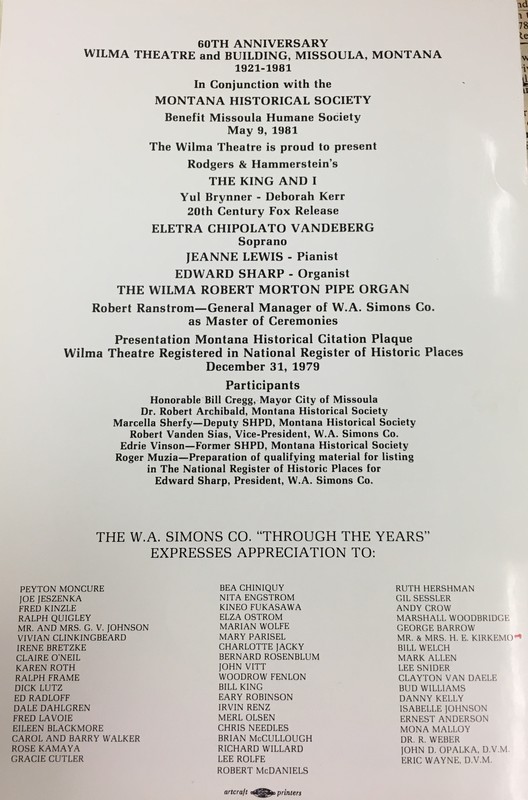
The other inside page of the program from 1981. It features a reminiscence of activities participated in in the Wilma building by Lucie Clapp Hagens.
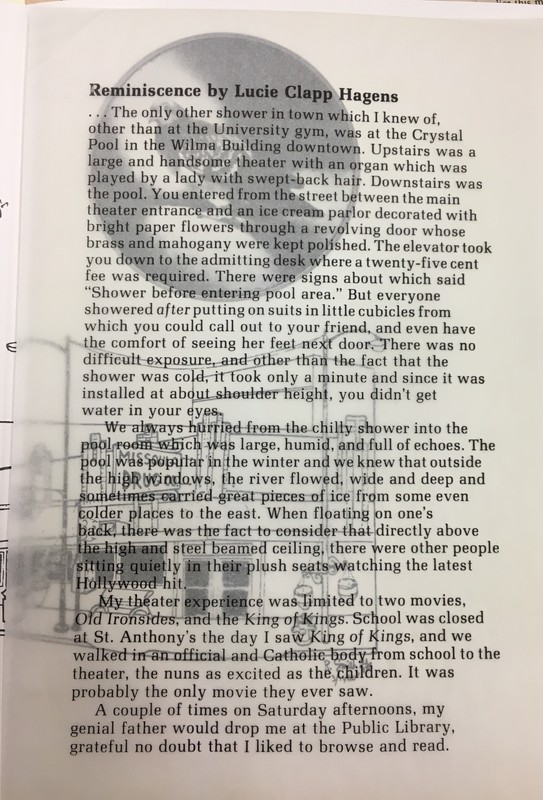
A photo of the Wilma from the Clark Fork River. 1955

Picture of the Chapel of the Dove which was located in the basement of the Wilma building until it was removed in 1993. The altar can be found on display at Rock'n Rudy's.
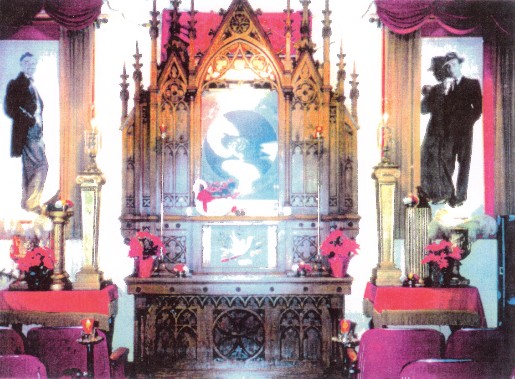
Backstory and Context
Text-to-speech Audio
As an early western entrepreneur, Billy Simons produced Wild West shows and built several theatres in Oregon, Idaho, and Alaska during the Alaskan gold rush days.1 Edna Wilma, Simon's wife and a renowned operetta singer, performed in romantic comic opera that included singing and dancing with her sister Edith for the Pantages Vaudeville Circuit. Simons became the president of the Northwest Theatre Company and together, Simons and Edna Wilma built their entertainment enterprise across the Pacific Northwest.2 After Simon’s death in 1937, Edna continued to run and manage their chain of theatres throughout Montana, Idaho, and Washington.
The Wilma was extremely glamorous when it was first built and enjoyed in the early 1920s. The building included a “Louis XIV-style palace theatre with seating for more than a thousand people, a Robert Morton Company pipe organ, and loge seats. The building’s basement held a café with a mezzanine orchestra balcony for the diners’ listening pleasure, a gymnasium, and the Olympic-sized Crystal Pool—Missoula's first indoor swimming pool—as well as offices and apartments.”3 Like other big theatre buildings, it was designed to be part theatre, part mansion, and part luxurious hotel with ladies’ waiting lounges, vases full of fresh flowers on display, uniformed ushers, canaries in cages, elegant furnishings and red plush seats.4 There were no other theatres in Missoula as luxurious as the Wilma, and it rivaled theatres in larger cities of the Northwest as well. The Los Angeles Philharmonic Orchestra preformed for the Wilma’s grand opening on May 11, 1921, and the theatre was packed.
The Wilma’s first “photoplay” feature was The Mark of Zorro on May 13th, 1921.5 Tickets ranged from $3 for the lower seats and up to $6 for the loge seats in all sections of the theatre. The photoplays and movies seemed to be the most popular and the most common kind of showing at the theatre in comparison to plays or concerts. During prohibition, movies were also the most popular form of entertainment for the working class. The increase of family time spent in theatres really pleased reformers, and theatres like the Wilma became known as places for family recreation and entertainment.
In the 1930s, the swimming pool and gymnasium were closed as a result of moisture problems, and the café closed soon after. These spaces were filled by offices, resulting in the Wilma having eighteen offices, thirty-five apartments and two shops in addition to the theatre.6 In 1950, Edna Wilma married her second husband Edward Sharp and together they began renovations on the Wilma Theatre. The renovations included the “acquisition of a three-rank Robert Morgan organ from the Urpheus Theatre in Seattle to replace a similar original model, [and] a concert Baldwin piano from the San Francisco Opera House.”7 Renovations also included the “instillation of modern projection, lighting and sound equipment, re-terracing of the seating arrangement to increase leg room resulting in a loss of seating from 1400 to 1063,” in addition to painting and other touch up work or remodels within the theatre.8 In February of 1951, the Wilma held a grand reopening showcasing the new renovations.
Sharp and his business partner Robert Sias managed the Wilma Theatre after Edna Wilma’s death in 1954. They continued many of the sponsored cultural events and traditions maintained by Edna Wilma such as Good Friday and Easter Sunday services. The Wilma also continued to host many different performers such as John Philip Sousa, Mahalia Jackson, Ethel Barrymore, and Carlos Montoya, in addition to touring New York shows.16 In 1961, when she found out the Wilma was a movie house, the renowned gospel singer Mahalia Jackson began to back out of her sold out performance. However, upon Sharp informing her the theatre not only housed all their concerts, but also operated as a church for Good Friday service and hosted Edna Wilma’s funeral, Jackson changed her mind, saying; “Well, Mr. Sharp, if the Wilma is good enough for the Lord, it’s good enough for me.”9 However, despite the new renovations, cultural attractions, and big-name performers, the Wilma faced competition from home televisions for movie entertainment and therefore, faced decreases in sales.
In December of 1979, the Wilma theatre was added to the National Register of Historic Places. Not only was it recognized for its historical significance and beauty, Ed Sharp was also recognized for his care to preserve that historical beauty and significance. Sharp not only maintained a passionate care for the building and its productions as built and established by Simons and Wilma, but he also added the Chapel of the Dove. From 1982 to 1993, Sharp operated the Chapel of the Dove, which was a third theatre located in the basement of the Wilma Building designed to be a monument to Sharp’s beloved pigeon Korro Hatto, “who could often be seen perched upon Eddie’s shoulder as he took sold tickets and refreshments at the entrance.”10 The Chapel of the Dove showed movies and also served as a place to get married. It closed in 1993, but the alter is preserved and can be found at Rockin’ Rudy’s, a local record and gift shop.
Today, the Wilma is recognized for its beauty and historical significance, and it remains a center of entertainment in downtown Missoula.
Sources
Administration. “The Chapel of the Dove (1982-1993)”, Forgotten Wilma: The Cryptic History of Missoula. July 23rd 2013. Accessed November 17th 2019. http://forgottenwilma.com/archives/772.
H. E. and Lillian Kirkemo Papers, Archives and Special Collections, Maureen and Mike Mansfield Library, The University of Montana-Missoula.
Mathews, Allan James. A Guide to Historic Missoula. Published in Canada. Montana Historical Society Press. 2002. Accessed October 11th, 2019.
National Register of Historical Places Inventory Nomination Form. Wilma Building clippings and information, 1978-1988. Box 2, Folder 6. H. E. and Lillian Kirkemo Papers, Archives and Special Collections, Maureen and Mike Mansfield Library, The University of Montana-Missoula.
Smith, Steve. “The Wilma An Aging Beauty in Need of a Facelift.” The Missoulian. 1978. Wilma Building clippings and information, 1978-1988. Box 2, Folder 6. H. E. and Lillian Kirkemo Papers, Archives and Special Collections, Maureen and Mike Mansfield Library, The University of Montana-Missoula.
Sundermann, Elizabeth "Libi". "A "Temple of Pleasure": Missoula's WILMA Theatre." Montana: The Magazine of Western History 63, no. 1 (2013): 56-63. Montana Historic Society. Accessed October 4th, 2019. http://www.jstor.org.weblib.lib.umt.edu:8080/stable/24416305.
Vinson, Edrie. “The Wilma Theatre is listed on the National Register of Historic Places.” Montana Historical Society. Wilma Building clippings and information, 1978-1988. Box 2, Folder 6. H. E. and Lillian Kirkemo Papers, Archives and Special Collections, Maureen and Mike Mansfield Library, The University of Montana-Missoula.
Footnotes
- National Register of Historical Places Inventory Nomination Form. Wilma Building clippings and information, 1978-1988. Box 2, Folder 6. H. E. and Lillian Kirkemo Papers, Archives and Special Collections, Maureen and Mike Mansfield Library, The University of Montana-Missoula.
- Elizabeth "Libi" Sundermann. "A ‘Temple of Pleasure’: Missoula's Wilma Theatre." Montana: The Magazine of Western History 63, no. 1 (Season 2013): 56-63, quotation p. 58. http://www.jstor.org.weblib.lib.umt.edu:8080/stable/24416305.
- Sundermann, "Temple of Pleasure," p. 63.
- Sundermann, "Temple of Pleasure," p. 63.
- Sundermann, "Temple of Pleasure," p. 63.
- National Register of Historical Places Inventory Nomination Form. Wilma Building clippings and information, 1978-1988. Box 2, Folder 6. H. E. and Lillian Kirkemo Papers, Archives and Special Collections, Maureen and Mike Mansfield Library, The University of Montana-Missoula.
- Edrie Vinson, “The Wilma Theatre is listed on the National Register of Historic Places,” Montana Historical Society. Wilma Building clippings and information, 1978-1988. Box 2, Folder 6. H. E. and Lillian Kirkemo Papers, Archives and Special Collections, Maureen and Mike Mansfield Library, The University of Montana-Missoula.
- Edrie Vinson, “The Wilma Theatre is listed on the National Register of Historic Places,” Montana Historical Society. Wilma Building clippings and information, 1978-1988. Box 2, Folder 6. H. E. and Lillian Kirkemo Papers, Archives and Special Collections, Maureen and Mike Mansfield Library, The University of Montana-Missoula.
- Steve Smith, ”The Wilma An Aging Beauty in Need of a Facelift,” The Missoulian, 1978. Wilma Building clippings and information, 1978-1988. Box 2, Folder 6. H. E. and Lillian Kirkemo Papers, Archives and Special Collections, Maureen and Mike Mansfield Library, The University of Montana-Missoula.
- Administration, "The Chapel of the Dove (1982-1993),” Forgotten Wilma: The Cryptic History of Missoula, July 23rd, 2013. http://forgottenwilma.com/archives/772.
Forgotten Wilma Administration. "W.A. “Billy” Simons (1860?-1937)." The Cryptic History of Missoula. WordPress. June 6th, 2014. http://forgottenwilma.com/archives/date/2014/06.
Forgotten Wilma Administration. “Edna Wilma Simons Sharp (1895-1954).” The Cryptic History of Missoula. WordPress. March 16th, 2012. http://forgottenwilma.com/archives/80.
H. E. Kirkemo Photographs, undated. Box 2, Folder 2. H. E. and Lillian Kirkemo Papers. Archives and Special Collections, Maureen and Mike Mansfield Library, The University of Montana-Missoula.
H. E. Kirkemo Photographs, undated. Box 2, Folder 2. H. E. and Lillian Kirkemo Papers. Archives and Special Collections, Maureen and Mike Mansfield Library, The University of Montana-Missoula.
Gibson, Kirkemo, and Bakke Architectural Drawings. Series No. XXVII. Mss 020. No. 114a. page 29. Archives and Special Collections, Maureen and Mike Mansfield Library, University of Montana—Missoula.
The Wilma Theater under construction. Missoula, Montana. The Clark Fork River is in the foreground. “Wilma Theater Under Construction.” 1921. Photo number 90.0081. Archival Photographs from the University of Montana. K. Ross Toole Archives and Special Collections. University of Montana—Mansfield Library. Missoula, Montana. Accessed September 22nd,2019. https://mtmemory.org/digital/collection/p16013coll27/id/1827/rec /2.
Construction of Wilma Stage Area, looking directly at stage. “Construction of Wilma Theater stage.” 1920. 88.0069. Archival Photographs from the University of Montana. K. Ross Toole Archives and Special Collections. University of Montana—Mansfield Library. Missoula, Montana. https://mtmemory.org/digital/collection/p16013coll27/id/3527/rec/5. Accessed September 14th, 2019.
Sanborn Map, Missoula, Montana, 1921, Sheet 9. Digital Sanborn Maps 1867-1970. Archives and Special Collections, Mansfield Library, University of Montana, Missoula, Montana. Accessed September 28th, 2019. http://sanborn.umi.com.weblib.lib.umt.edu:8080/browse/mt/5054/24447/25519/327340.
John S. Haines Collection. “Wilma Theatre Program, 1933.” 1 Folder No. 1/1. Collection No. Mss 564. Box No. 1 of 1. Ai14i64. K. Ross Toole Archives and Collections. Mansfield Library. Missoula, Montana. Accessed September 13th, 2019.
John S. Haines Collection. “Wilma Theatre Program, 1933.” 1 Folder No. 1/1. Collection No. Mss 564. Box No. 1 of 1. Ai14i64. K. Ross Toole Archives and Collections. Mansfield Library. Missoula, Montana. Accessed September 13th, 2019.
Wilma Building clippings and information, 1978-1988. Box 2, Folder 6. H. E. and Lillian Kirkemo Papers, Archives and Special Collections, Maureen and Mike Mansfield Library, The University of Montana-Missoula.
Wilma Building clippings and information, 1978-1988. Box 2, Folder 6. H. E. and Lillian Kirkemo Papers, Archives and Special Collections, Maureen and Mike Mansfield Library, The University of Montana-Missoula.
Wilma Building clippings and information, 1978-1988. Box 2, Folder 6. H. E. and Lillian Kirkemo Papers, Archives and Special Collections, Maureen and Mike Mansfield Library, The University of Montana-Missoula.
Healy, Stan. Clark Fork River, Higgins Avenue Bridge and the Wilma Theater Building. “Clark Fork River and the Wilma.” September7th, 1955. 90.0610. Mss 430. Stan Healy Photographs. Archival Photographs from the University of Montana. K. Ross Toole Archives and Special Collections. University of Montana—Mansfield Library. Missoula, Montana. https://mtmemory.org/digital/collection/p16013coll27/id/5775/rec/4. Accessed September 14th, 2019.
Anne Cruikshank. “Missoula’s gone but not forgotten landmarks.” The Missoulian. December 11, 2018. Accessed November 17th, 2019. https://missoulian.com/news/local/missoula-s-gone-but-not-forgotten-landmarks/article_869e9716-ec11-5fab-8d97-08f745915368.html.
